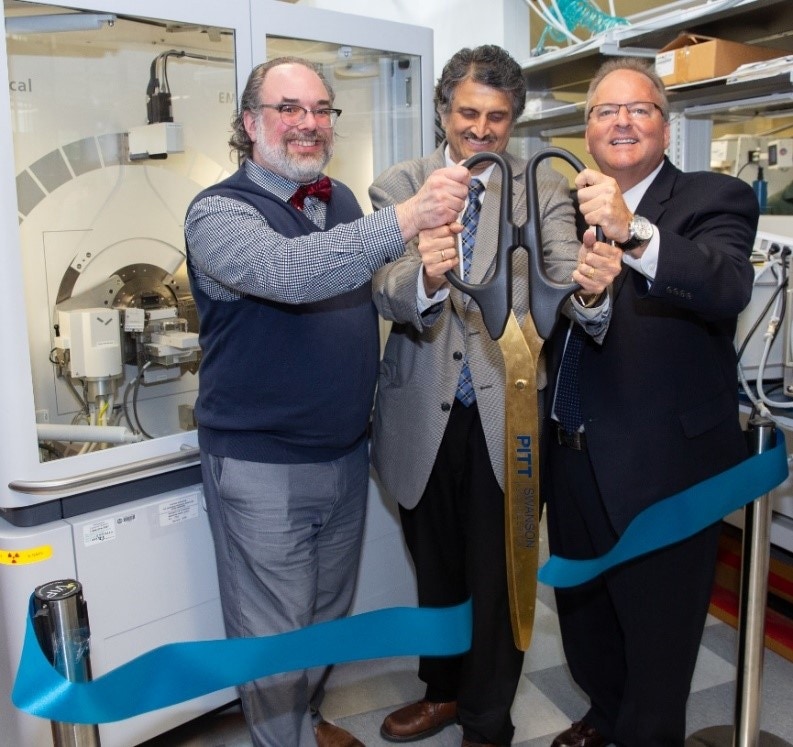
(Left to right):Scott Speakman, XRD Principal Scientist, Malvern Panalytical; Prashant Kumta, PhD; and Ron Amodeo, Global Strategic Account Manager - Customer Executive, Malvern Panalytical. (Image credit: Paul Kovach)
PITTSBURGH (June 4th, 2019) — Energy storage influences every part of modern life, from the cell phone in your pocket to the electric car on the highway. However, seeing the chemistry of what is happening inside a battery while it is in use is indeed tricky, but it could have remarkable opportunities for identifying new materials as well as improving the battery itself. Now, the Next-Generation Energy Conversion and Storage Technologies Lab (NECSTL) at the University of Pittsburgh’s Energy Innovation Center has announced a new energy research partnership with Malvern Panalytical that will enable the lab to do exactly that.
The NECSTL, headed by Prashant N. Kumta, PhD, focuses on energy conversion and storage, including rechargeable battery systems. Malvern Panalytical’s Empyrean X-ray Platform, a multipurpose diffractometer, will be used in the lab to identify solid-state materials by determining their internal structure, composition and phase while they are in use.
“For example, it can be used to determine what happens to an electrode and electrolyte material as the main active component is removed and brought back during a electrochemical reaction, such as in the case of a lithium-ion rechargeable battery,” explains Prashant N. Kumta, PhD, Edward R. Weidlein Chair professor of Bioengineering. Dr. Kumta also holds appointments in chemical and petroleum engineering, mechanical engineering and materials science, the McGowan Institute of Regenerative Medicine, and oral biology. “This understanding will lead to new discoveries of mechanisms and operation, which can result in new materials discovery and new designs for significantly increasing the performance of batteries and fuel cells.”
Dr. Kumta also believes that the partnership will enable the design of new instrumentation for further in-situ diagnostics of energy storage and conversion systems.
Commenting on the partnership, Malvern Panalytical's XRD Principal Scientist Scott Speakman adds, "Malvern Panalytical’s innovations in hard radiation equipment allowed us to design an instrument that is fantastic for battery analysis. As a consequence, we discovered new challenges and opportunities that can only be addressed by working with leading researchers in energy materials. This collaboration will not only produce improved batteries but also improved analytical techniques for materials research."
The new partnership and equipment was celebrated on May 23 in Pittsburgh, PA at the Energy Innovation Center, where attendees got a first look at the newly installed Malvern Panalytical Empyrean X-ray diffraction (XRD) system up close. One important result of the collaboration will be a Battery Analysis Workshop to be held at the NECSTL/University of Pittsburgh September 18-19, 2019. The workshop will be an educational experience exploring analytical techniques for battery components, pouch cells, and complete battery structures.